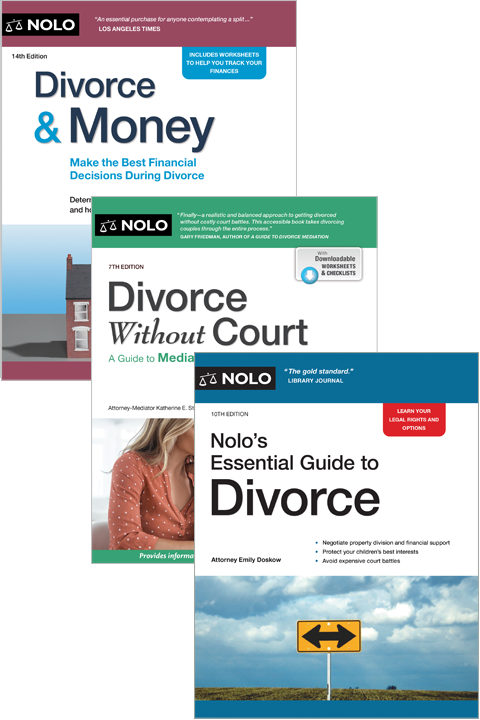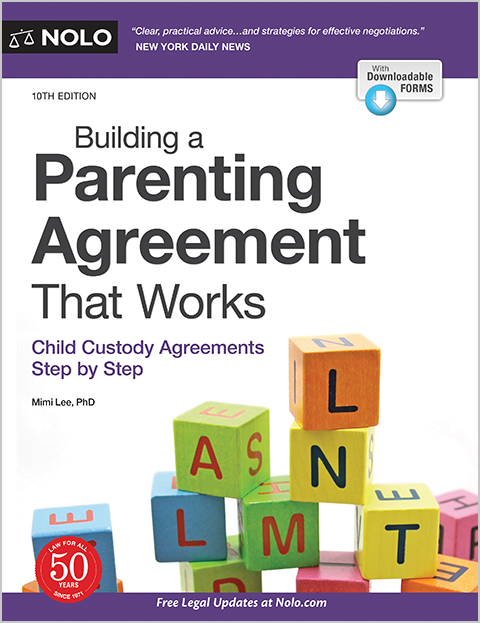Learn about the differences between legal and physical custody, how sole custody and joint or shared custody works, and what goes into parenting plans.
When parents get divorced, the issue of child custody is usually one of the thorniest problems they have to deal with. Where will their kids live? How much time will each parent get with their children? Who will make the important decisions about the children's lives?
These questions are related to the two main types of custody: physical custody and legal custody. Within each of those categories, there are two basic ways of breaking down custody arrangements: sole custody and joint (or shared) custody. To mix things up even more, some states use different language when referring to the arrangements for custody.
Regardless of the type of child custody, it's an overriding principle that judges must focus primarily on the children's best interests. But states have their own rules for deciding what's best for children.
Legal Custody
Legal custody (sometimes called "parental responsibility," "decision-making responsibility," or similar terms) refers to parents' rights to make decisions about their children's upbringing, including:
- where they'll attend school and whether they'll get other educational resources like tutoring
- religious instruction and practices
- participation in extracurricular activities like team sports or music lessons, and
- health care, including vaccinations and mental health care.
Sole Legal Custody
When you have sole legal custody of your children, you have the right to make all child-related decisions without consulting the other parent. But if you want sole legal custody, you'll have to convince the judge that it would be in your kids' best interests. That might be the case when, for example:
- one parent doesn't take an interest in the children or in being part of their lives
- one parent isn't fit to make wise decisions about the kids, because of problems like untreated substance abuse or severe mental illness
- the hostility and fighting between the parents is so great that it would be very difficult—and hard on their kids—for them to share legal custody, or
- one parent is abusive.
(Learn how domestic violence affects child custody.)
Joint Legal Custody
When divorced parents have joint legal custody, they share the authority to make important decisions about their children's lives—just as they did when they were married. In most states, joint legal custody is the preference or default after a divorce.
As a practical matter, when one parent is the children's primary caregiver, that parent will often make many of the day-to-day decisions, such as authorizing emergency medical treatment or making routine doctor's appointments. If you and your spouse are working out a parenting agreement before or during the divorce process, you can include details about how you'll communicate and include each other in these decisions, as well as how you'll deal with future disagreements. For example, you might include a provision that if you and your spouse disagree about medical treatment, you'll follow the advice of the child's doctor.
Unfortunately, joint legal custody can sometimes lead to bitter post-divorce battles when parents have strong disagreements about issues like whether their children should receive vaccinations or play football. If you share joint legal custody but exclude your ex from the decision-making progress—or make unilateral decisions over your ex's objections—your ex could take you back to court and ask the judge to enforce the custody orders.
In addition to the stress and animosity that these legal fights can cause, they'll probably be expensive if you've had to hire a lawyer. And in the worst-case scenario, the judge might decide to award sole legal custody to your ex and change your physical custody arrangements.
Physical Custody
Physical custody (sometimes called "parenting time," "residential responsibility," or similar terms) refers to the right of parents to live with and take care of their children on a daily basis. As with all custody decisions, judges must consider which physical custody or parenting arrangement would be in the children's best interests.
Sole Physical Custody
If you have sole legal custody, your children will live with you full time. Sole physical custody used to be the norm after divorce. Traditionally, children lived with their mothers, while the fathers had visitation. That's no longer the case, but judges will still typically award physical custody to one parent (the "custodial parent") when it would be best for the children—such as when the other parent:
- lives so far away that it would be harmful to make the children shuttle back and forth regularly
- is unfit to live with the children because of substance abuse, child abuse or neglect, or serious mental illness
- can't provide the children with a safe housing situation, or
- is incarcerated.
When awarding sole physical custody, judges will usually allow the noncustodial parent a certain amount of visitation time. Even if the noncustodial parent might pose a danger to the kids, the judge may allow visitation with conditions like requiring supervised visitation or drug tests.
Joint or Shared Physical Custody
The recent trend has been to favor joint or shared physical custody—allowing children to spend significant amounts of time with both of their parents. Judges (and legislatures) have been swayed by consistent research findings that children fare better after divorce under shared parenting arrangements. However, joint physical custody works best if parents live relatively close to each other, as it lessens the stress on the children and allows them to maintain a somewhat normal routine.
Shared physical custody doesn't necessarily mean a 50-50 split. Often, children will live primarily with one parent but spend overnights with the other parent—typically on weekends and during school vacations. With this type of arrangement, the parent with primary physical custody is still referred to as the custodial parent, while the other is the noncustodial parent.
In cases where shared physical custody is closer to 50-50, children might spend four nights a week with one parent and three nights with the other, or they might even alternate weeks, months, or longer periods between their parents. To make things easier on their children, some parents use a joint custody arrangement—commonly called "bird's nest custody" or "birdnesting"—that lets the kids stay in the family home while the parents take turns moving in and out.
Split Custody
Occasionally, parents with more than one child will split up the siblings between them, so that each parent has primary physical custody of at least one child. For example, their teenage son may live with his father, while their toddler lives with the mother.
Co-Parenting Plans
When parents share joint custody, they usually work out a parenting plan or schedule that fits the children's needs as well as the parents' work schedules and housing arrangements. If the parents can't agree on a schedule on their own, judges will often order them to participate in custody mediation. In fact, some states require mediation in all cases where there are custody disputes. If mediation doesn't work, a judge will have to impose an arrangement.
In addition to detailing when children spend time at each parent's home, parenting plans may often include other details such as:
- how to arrange exchanges between the parents (drop-offs and pick-ups)
- how the parents will communicate and deal with requests for temporary changes in the schedule, and
- paying for the cost of transportation if the parents live far from each other.
Some state laws or court rules spell out exactly what must go into the parenting plans.
Pros and Cons of Joint Physical Custody
Among the advantages of joint physical custody, it ensures that children have continuing contact and involvement with both parents. And, as we've mentioned, research has shown that can have a positive impact on children's adjustment after divorce. Joint physical custody also allows parents to share the work of parenting, alleviating the burdens of being a single parent.
Of course, there are disadvantages to shared physical custody, including:
- the strain on children from shuttling back and forth between their parents' homes
- the expense of maintaining two homes for the children
- additional travel expenses if the parents live far from each other
- potential negative effects on the kids when their parents don't cooperate with each other.
These disadvantages may change depending on the children's ages. For instance, older children are often more concerned about staying close to their friends. So they might be less likely to want to spend time with a parent who lives across town, much less in another state.
Also, if one parent wants or needs to move away, that could upend the shared custody arrangement and lead to a nasty custody battle.
How Does Child Custody Affect Child Support?
The parents' custody arrangements will usually determine which parent must make support payments, while the amount of child support is largely based on parental income. In some states, however, the percentage of time children spend with each parent will factor into the child support calculation.

